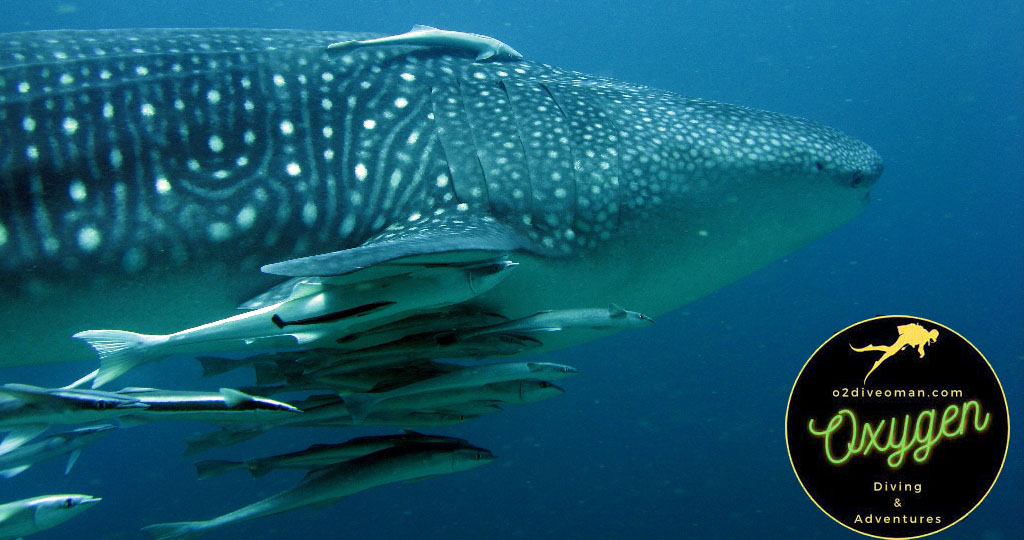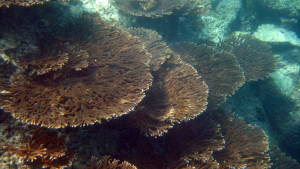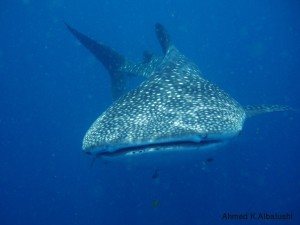Protecting our Planet…
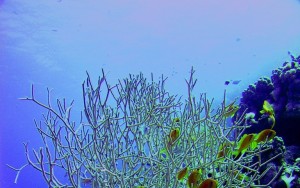 Here at Oxygen Diving and Adventures we recognise that as divers and as a dive training establishment, we have a responsibility to take positive steps to protect the aquatic environment that we so much enjoy. To enable us to do this, we have linked with PADI’s Project A.W.A.R.E (Aquatic World Awareness, Responsibility & Education) to enable us not only to take action locally but be part of an international movement to protect, educate and raise awareness of the aquatic realm.
Here at Oxygen Diving and Adventures we recognise that as divers and as a dive training establishment, we have a responsibility to take positive steps to protect the aquatic environment that we so much enjoy. To enable us to do this, we have linked with PADI’s Project A.W.A.R.E (Aquatic World Awareness, Responsibility & Education) to enable us not only to take action locally but be part of an international movement to protect, educate and raise awareness of the aquatic realm.
PROTECTING OMAN’S CORAL REEFS
Coral reefs play a vital role in maintaining the planet’s biological diversity and as divers, it is important that we not only gain an understanding of their role but also become active in their protection, ensuring against their loss and enabling future generations of divers to enjoy them as we do today.
In Oman, we are fortunate enough to have some spectacular coral reefs, with new species of coral continually being discovered. Flanked by
strikingly scenic coasts and down in the shallow waters, the coral reefs of Oman are largely uncharted territory — their charm and diversity is yet to be fully explored and enjoyed by residents and tourists alike.
Coral sites throughout the Sultanate are diverse. Some of the most beautiful coral reefs sites of Oman are located in the Muscat area, Damaniyat Islands, Bandar Jissah, Bandar Khayran, Fahal Islands, Sharqiya, Barr al Hikman, Masirah Islands, Dhofar, Musandam and Marbadh. Corals are not just lifeless rocks. “They are animals with a stony skeleton”, explains Eng Mussallam Mubarak al Jabri, head of Marine Pollution Management Department at the Ministry of Regional Municipalities and Environment. Reefs are one of the richest habitats for animal life on earth. Fahal Island in the Muscat Area is a centre of coral diversity.
Muscat area is rich in corals but the centre of diversity is at Fahal Island’s Ra’s al Hamra, which is known for a unique coral community. Exposed rocky shores facing north and east are the hub of soft coral growth, while south and west facing shores contain hard coral growth.
The Damaniyat Islands, about 17-km offshore, support extensive reef development. Damaniyat reefs are typically dominated by a few genera, but at some sites where the assemblage is mixed, coral diversity is known to be high. Damaniyat reefs provide a diverse habitat and feeding grounds for commercially important fish and a high potential value to Oman’s tourist industry, says Mussallam, who being an active diver has watched coral reefs from close quarters. Sharqiya coast, to the east of Muscat, used to be an area of luxuriant coral growth, but has only a few reef formations now. Much of the previously luxuriant coral growth was destroyed in a large storm a few years ago.
However, the fishing industry of Sharqiyah depends on coastal fish stocks, many of which are reliant on shallow water coral environment. Reefs of this area are also important for turtles, whales, dolphin and seabirds. At the southern shores of Barr al Hikman coral watchers have found extensive reefs covering kilometres of shallow coastal areas. The reefs of Barr al Hikman are also known for supporting high densities of migrating birds, and are important for coastal protection and production of coral sand. Efforts are under way to preserve the natural richness of the coral reefs.
Some of the reef areas, although containing rare coral communities, are faced with several environmental hazards. Things are, however, about to change as implementation of the country’s National Coral Reef Management Plan-1996 gained new momentum in 2001, which was designated as the Year of the Environment. The plan, aimed at restoring and preserving the health and richness of coral reefs, will give a major boost to the popularity of Oman’s coral reefs.
Thanks to Oman’s National Coral Reef Management Plan, extensive efforts are under way to preserve the natural richness, variety and quality of the country’s extensive coral reef areas. Protecting the coral reefs of Oman is important because reefs are one of the richest habitats for animal life on earth. The health of the oceans and planet depends on the survival of these coral reefs.
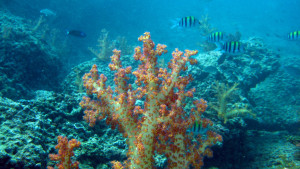
His Majesty Sultan Qaboos has aptly remarked that “the conservation of the environment is the responsibility of all of us — a responsibility that knows no political boundaries”. Coral reefs are a source of many benefits to Oman, as they:
- Provide nursery and feeding areas for fish and other commercially important species,
- Provide resource for recreation and tourism,
- Offer coastal protection, and
- Help conservation of biological diversity and maintenance of marine ecosystem.
Taking care of coral reefs is important because they are of value to fisheries, tourism, recreation, coastal protection, marine bio-diversity and marine biology. Coral reefs are used by certain fish, which come to the reefs seasonally to breed and lay their eggs. Impacts on reefs are caused by both human and natural causes. Some of the key management issues include littering by traders and fishermen in Musandam, which causes pollution to these seabeds. This affects the potential for eco-tourism. Reef damage is also traceable to the impact of fishing activities. New methods are being worked out by the Ministry of Regional Municipalities and Environment to reduce the incidence of lost/abandoned fishing gear, ropes, nets, fish traps and anchors. Oman, undoubtedly, is emerging as a major destination for eco-tourism on the world map, thanks to the charm and diversity of its coral reefs, scenic coasts and Sultanate’s deep concern for environmental quality and cleanliness.
What are we doing about it?
- Encouraging Responsible Diving: All divers are encouraged to not touch and to not take anything away from the reef. One of the ways in which divers can ensure that do not impact on the coral reef, is to maintain good buoyancy. We provide and encourage our divers to participate in our Peak Performance Buoyancy Speciality course which will enable them to glide effortlessly over coral reefs.
- Underwater Clean-ups: We can’t be responsible for the wider community’s attitude to the environment, but we can help to clean up litter and debris that is often found underwater and can have a damaging effect on local marine life. By organising underwater clean ups, we are also generating publicity and getting the message across to the general public that litter can kill. We hope that in time, people’s attitude to throwing rubbish in the sea will change.

WHALE SHARK Awareness
UNDERSTANDING OMAN’S WHALE SHARKS
The Whale Shark is the world’s largest species of fish. It can grow up to 20 m in length, weigh up to 34 tonnes and can live to reach a grand old age of 100 yrs old. Although a member of the shark family, it is a passive creature, eating mainly zooplankton and nekton.
The best time to see Whale Sharks here in Oman is in June and October, when they are attracted to the plankton rich waters found along current boundaries. However, it is not uncommon to see the Whale Shark throughout the year and regular sightings have been recorded.
The Whale Shark has been listed by the IUCN (World Conservation Union) as vulnerable and my face extinction in the medium term future. The main threats facing the survival of the Whale Shark is habitat loss e.g. overfishing of reef fish leading to explosions of coral grazers, causing a reduction in food, maritime development, pollution, disturbance, and the trade in Whale Shark meat and fins.
Due to the nature of the Whale Shark’s environment, carrying out research on this species has been difficult, as a result very little is known about their ecology, behaviour and what characterises their habitat. To ensure the survival of the Whale Shark and to prevent further habitat loss, Oxygen Diving and Adventures has linked up with an international whale shark photo id project. The aim of the Whale Shark Project is to investigate Whale Sharks habitat use and migration through photo-id. Photo-id programmes involve members of the public, dive operators and scientists to take photographs of individual characteristics such as scars and pigmentation patterns which are unique to that animal. These photographs, along with the relevant information regarding where they were taken and information about the animal, are then included in a database. This can then be searched to find matches- animals that have been photographed previously- which provides valuable data on the Whale Sharks’ biology, ecology and movement over time. The project will provide valuable data which can then be used in conservation planning and management measures to ensure the future protection of this species.
Contact us for more information on how you can get involved.
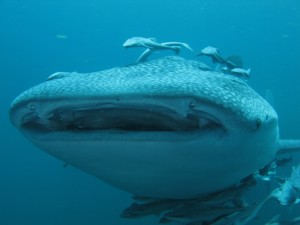
GETTING UP CLOSE & PERSONAL WITH WHALE SHARKS
Diving or snorkeling with Whale Sharks in their natural environment is a breathtaking and rewarding experience. The world’s largest fish gliding slowly but gracefully past, resplendent in its dappled skin, within touching distance and impassive to the presence of the onlooker. Whale Sharks are passive creatures and can be agitated by aggressive behavior such as being touched, or chased. It is as much a diver’s responsibility as anyone’s to ensure the survival of Whale Sharks for future generations. This means causing minimal disturbance to the sharks when approaching by boat or when diving. Although Whale Sharks are harmless, their sheer size makes it necessary to exercise caution around them, especially at the tail end.
WHALE SHARK CODE OF CONDUCT FOR DIVERS & SNORKELERS
As a diver or snorkeler you can follow these simple tips when diving with whale sharks:
- Maintain a minimum distance to avoid injury to yourself and the whale shark
- Resist the temptation to touch, ride or chase a whale shark
- Allow normal movement, behaviour and direction in which the shark is travelling
- Take photographs without the use of a flash as this could cause harm or stress to the animal
- Swim slowly and deliberately without using motorised diver propulsion vehicles
- Follow and abide by local regulations
- Support legislation for increased whale shark protection
- Further your knowledge by completing a PADI Whale Shark Awareness Diver Distinctive Specialty
- Pick up a Project AWARE Whale Shark brochure
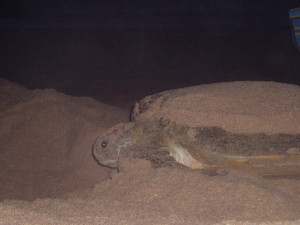
OMAN – TURTLE HEAVEN
Turtles are amongst the oldest and important marine species living in the Omani waters. Archaeological evidence shows that turtles have been hunted here for more than 7000 years and they are regularly seen today on most dive sites in Oman.
Marine turtles are cold-blooded reptiles and their distribution is restricted to the warmer areas of the world. Oman is one of the very rare places in the world where turtles can be watched freely and calmly. Turtle nesting attracts hundreds of visitors to Ras al Hadd each year to watch the site at close quarters.
Five different species of turtles swim the Omani waters. Four of them nest here. These include the endangered Green Turtle, Loggerhead Turtle and the Olive Ridley Turtle and the critically endangered Hawksbill Turtle. The — the Leatherback Turtle is a visitor in offshore waters.
It is believed that turtles live longer than any other backboned animal. Turtles that live in water have a flatter, more streamlined shell than turtles that live on land. Sea Turtles cannot withdraw into their shell and so they depend on their size and swimming speed for defence. They have large flattened limbs or flippers, which they beat while swimming. They move clumsily on land but are excellent swimmers. The fastest reptile in water is the Pacific Leatherback Turtle, which can swim at over 30 km/hr.
Hard scales cover the head of most species of turtles. They have no teeth. Instead they have a beak with a sharp cutting edge with which they cut food. All turtles lay their eggs on land. Female sea turtles do not normally leave the water except to lay their eggs. Most of the males never return to land after entering the sea as hatchlings.
Green Turtles: The Green Turtle’s local Arabic names are ‘Sul Hafah Al Khuthera’, ‘Hamas’ or ‘Shiree’. This is a very common species in the Indian Ocean. It is a popular food in many parts of the world. The use of its meat and eggs by humans has seriously endangered its survival. Green Turtles feed on luxuriant seaweeds and other green plants. They are found everywhere in Omani waters and travel further than other sea turtles. They can be seen in the hundreds, even thousands over the larger feeding areas. Green Turtles lay about 110 eggs in a clutch. The beaches of the peninsula of Ras al Hadd, which stretches between Ras Ar Ruwais and Khuwr Jaramah, attract the largest number of Green Turtles nesting in Oman. This is one of the only three very large nesting aggregations of Green Turtles known in the Indian Ocean.
Hawksbill Turtles: The Hawksbill turtle is one of the smallest of all the sea turtles. They resemble small green turtles and occur wherever there are coral reefs. In local Arabic it is called ‘Al Sherfaf’. It eats just about anything it can find in the water. The Hawksbill turtle is the only sea turtle that is classified as a critically endangered species. They lay about 100 to 160 eggs in a clutch. This is a difficult species to protect because they nest in low numbers spread over a wide area.
Loggerhead Turtles: The Loggerhead Turtles, locally called ‘Rimani’ or ‘Murah’, have a relatively flat carapace (upper shell), which is often light brown in colour. They are carnivorous. Their heavy powerful jaws enable them to easily crush even the thickest of shells. In Oman, the majority of Loggerheads nest on beaches of the Masirah Island, which is the world’s largest nesting population. Their egg clutches average 100 eggs.
Olive Ridley Turtles: These are best known for their huge synchronised nesting. It is a small turtle, which feeds on crabs, shrimps, jellyfish and seasquirts. The local name for this Turtle is ‘Al Zaytooni’. They lay about 100 eggs per clutch. The migration of this species is not known.
Leatherback Turtle: Called ‘Al Niml’ locally, this is an unusual turtle. It does not have plates like other turtles but a leathery skin over its shell. It reaches a weight of more than 600 kgs and is a giant among turtles. The largest on record is reputed to have weighed nearly 1000 kgs and measured 3 metres in length — about the weight of 10 large men! The Leatherback Turtle is carnivorous. In Oman the Leatherback Turtle feeds regularly in offshore waters. Roughly 85 eggs are laid per clutch.
2006 – THE YEAR OF THE TURTLE
Measures taken by the Sultanate to protect and conserve turtles in Oman
Blessed with a rich biodiversity, Oman offers a home for a variety of living creatures. In order to protect its wildlife, especially rare and endangered species, the Sultanate proclaimed 15 nature reserves. In celebration of the Year of the turtle in 2006, the Sultanate, the Ministry, in coordination with the concerned authorities, will be issued a set of commemorative postal stamps depicting sea turtles nesting in beaches and living in territorial waters. Furthermore, the ministry, in coordination with Sultan Qaboos University and Omani Environment Society, is conducting a detailed study on the migration of sea turtles, which includes tracing this migration by satellites. From the perspective of awareness raising, the ministry has initiated cooperative programs with corporations and companies to prepare information packages and cultural materials for purposes of persuading the public to take interest in the conservation of these species.
The ‘Ras Al Hadd Turtle Reserve’ was declared in 1996 in an attempt by the Government to preserve rare marine life in Oman,
particularly sea turtles. It covers 120 square kilometers of beaches, coastal lands, seabed and khawrs Jaramah and Al Hajr. It is a natural and safe refuge for thousands of rare turtles which come to this area for living and reproduction. These beaches attract a large number of endangered Green turtles nesting in the Sultanate. They host between 6,000-13,000 turtles annually which migrate to the Sultanate from remote areas like the Arabian Gulf, the Red Sea and the Somali Coast.
PROTECTING OMAN’S TURTLES – What can we do?
Sea turtles have lived in the world’s oceans for over 150 million years. Sadly these ancient reptiles are now globally threatened with extinction. Many populations are declining as a result of persistent hunting, increasing coastal development, incidental capture in fisheries, the degradation and destruction of nesting beaches and marine pollution. You can help to protect them by following these simple guidelines:
Turtle Facts
- All species of sea turtle are endangered and need protection.
- Turtles can drown if prevented from reaching the surface of the sea to breath.
- Litter is dangerous, especially plastic bags, which can be mistaken for jellyfish – a favorite turtle food.
- Turtles remain in the same region for years and, as adults return to the same nesting area year after year. If a nesting colony is destroyed, the turtles may never return.
What can you do?
- Support local sea turtle conservation and initiatives – consider volunteering!
- Participate in local sighting networks.
- Do not buy or sell turtle products. Turtles are strictly protected under CITES (Convention on International Trade in Endangered Species of Wild Fauna and Flora) and most national laws.
On the Water
- Watch for turtles when boating – boat strikes can kill.
- When in the water, keep your distance and avoid startling turtles.
- Do not disturb resting, sleeping or feeding turtles.
- Approach turtles slowly, calmly and move away if they show any signs of distress
- Never try to spear, harass, catch or ride turtles
- Do not touch or feed turtles
- Take all litter home with you, trash can kill, especially when it is mistaken for food
-
Recent Posts
-
Archives
-
Meta
